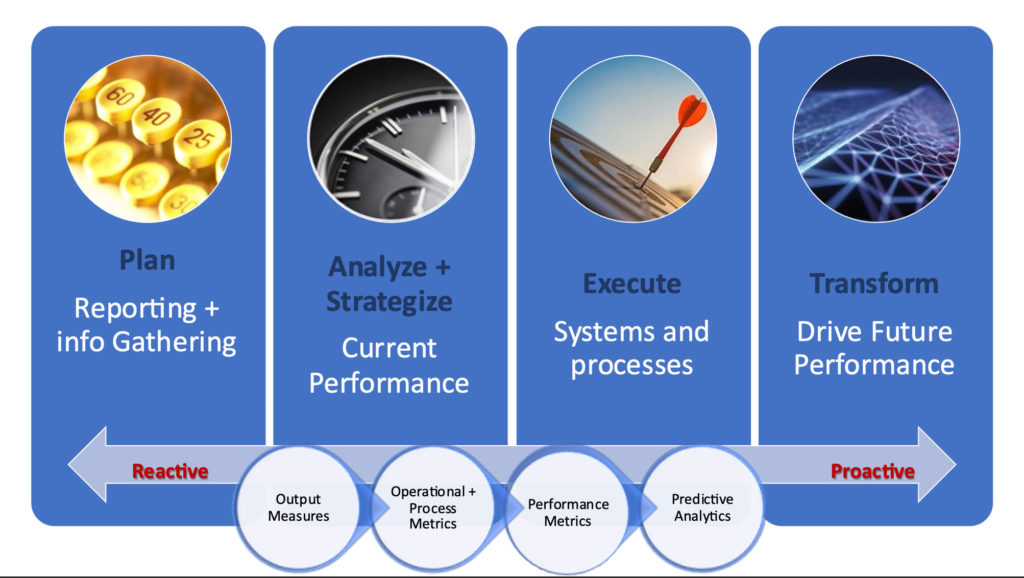
The work I do often starts with helping institutions to solve challenges around their financial reporting. The goal is to move from questioning the accuracy of the data to using it to make decisions. To do this, the data needs to be timely, accurate, and meaningful. Many of us spend a lot of time trying to access the data (timely) then question the accuracy. That wastes valuable decision-making time.
NACUBOs 2024 National Profile of Higher Education Chief Business Officers survey reveals top skills necessary for the future (2024-National-CBO-Profile-Fact-Sheets.pdf). The facts boil down to thinking about the drivers needed to achieve a positive future state. This is what we consider meaningful. What tools do you need to move beyond timely and accurate toward meaningful? How can you shift your perspective to focus on the future? What tools do you need to predict the future? It is all about understanding the operating model in higher education and the levers that drive that model.

Focus on the big picture
Leadership does not need to know the ins and outs of every line on the financials. Generally, the information we provide are the details of expenses. Why do we ask them to focus on the weeds? How can we translate these bits of data into information they will find meaningful? Simply change dollars into a unit of measure relevant to your audience (i.e. students, credits, athletes) and a more accessible story starts to unfold.
Take this to the next level by showing what success would look like. For example, how many students do you need in a class (on average) to be financially sustainable? What if I show you which disciplines and majors function below that number and provide insight into the class size difference between lower- and upper-level courses? Understanding this information enables you to determine which levers to adjust to be more sustainable.
As we face enrollment declines and consider canceling courses and sunsetting majors, we must consider lower faculty and instructor loads. We need to match faculty skills with projected course needs based on enrollment. Then, we can think about how to move instructors and faculty around to different courses or even disciplines.
The important message is that to create information your audience finds meaningful; you need to focus less on the dollars and more on what those dollars represent to them.